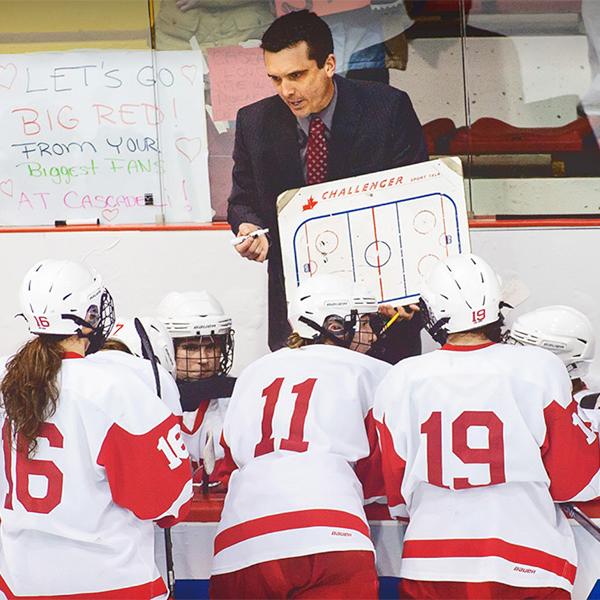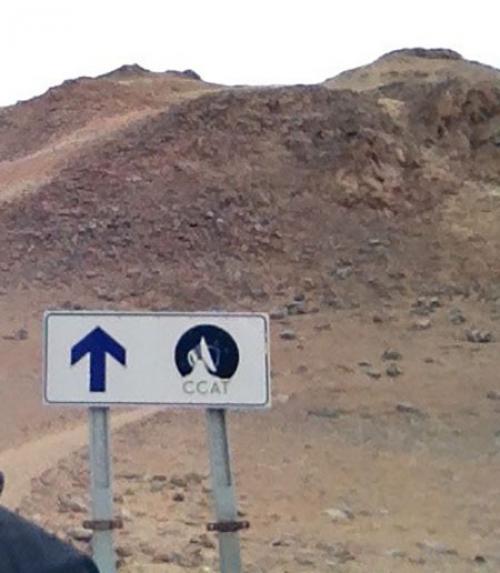Two weeks before the first annual CCAT-prime collaboration meeting was scheduled to be held April 7 at the University of Waterloo, the COVID-19 pandemic forced a switch to an online format.
Because the telescope is an international project with scientists in wildly disparate time zones, conference organizers faced major challenges.
“You can’t finish at 5 pm ET, because that’s midnight for Europeans. And when do you do meal breaks?” said conference organizer Michel Fich, professor of physics and astronomy at the University of Waterloo.
To compensate for the loss of informal, in-person conversations, optional time on a fourth day was added to the conference. “Every minute scheduled on that Friday was used,” said project scientist Gordon Stacy, professor of astronomy. “It was a terrifically good meeting.”
Attendance was high; the original 41 in-person registrants expanded to over 100 online.
“It was gratifying to note the widespread interest in CCAT-prime based on the number of attendees of the recent Zoom meeting,” said Fred Young, ’64, M.Eng. ’66, MBA ’66, an active participant in the meeting and major supporter of the project.
Screenshot of some of the participants at the April 7-10 online conference.
Despite the COVD-19 pandemic, telescope fabrication is continuing in Germany, and first light for CCAT-prime is planned for the end of 2021. More than forty CCAT-prime-related papers have already published. Many of the conference talks focused on science goals for CCAT-prime’s first year.
“We can get much better science done if we decide before we start taking the data what we need and what's the best format. Planning the science also has a side benefit of getting people involved earlier,” said Fich.
Nicholas Battaglia, assistant professor of astronomy, who serves as co-lead of the galaxy and cluster formation working group, noted that “CCAT-prime has the ability to measure some really small signals for the first time, but there are very difficult data analysis problems that we need to solve in order to extract these small signals that we’re interested in.”
The online format meant that undergraduate students like Yijie Zhu ’21, a physics and math major, were able to participate. He presented on a project that he is working on with Battaglia regarding CCAT-prime’s ability to detect Rayleigh Scattering, one of the small signals that is hidden within the CMB, relic radiation from shortly after the Big Bang.
Kaustuv Basu, University of Bonn, gave a presentation about the telescope’s ability to detect the kinematic Sunyaev-Zel’dovich effect -- the distortion of the cosmic microwave background radiation (CMB) by galaxy clusters -- part of the search for exotic particles and understanding dark matter.
Robert Simon, Universität zu Köln, outlined one of the key programs for CCAT-prime, in which the detailed physical conditions in the star forming clouds of the Milky Way and nearby galaxies are to be studied, thus providing the necessary reference for the interpretation of the data to be observed from the earliest star formation in the young universe.
Doug Johnstone, NRC Herzberg and the University of Victoria, coordinated a session on time domain astrophysics (the study of how astronomical objects change with time), for which CCAT-prime is ideally suited.
Laura Fissel and Sarah Sadavoy, Queen’s University; and Susan Clark, Institute for Advanced Study in Princeton, gave a presentation on how CCAT-prime can be used to study the magnetic field lines in the galaxy.
Presentations were also given by Cornell graduate students as well as CCAT-prime project director Terry Herter, professor of astronomy; Michael Niemack, associate professor of physics and astronomy; Steve Choi, Cornell Presidential Fellow; and Dominik Reichers, assistant professor of astronomy.
“I don’t think people realized before this meeting how much overlap there is in the data that the different science projects need,” said Fich. “For example, one project is observing the cosmic microwave background (the most distant observable part of the universe), and another group is looking at transients (things that change in brightness) such as nearby protostars -- and it turned out they all want the same data.”
Bringing all the science groups together to begin melding their requirements into one survey that can be executed remotely was an important part of the meeting, said Stacey. “That project really got kicked off. People are all on the same page as far as the instruments, their sensitivities and the amount of time available.”
The working groups will continue meeting weekly via telecom; once a final survey strategy is decided on, it will be put together into a single document to guide project science.
As a result of this meeting, said Fich, “the buy-in from scientists is really tremendous.”
Read the story in the Cornell Chronicle.






